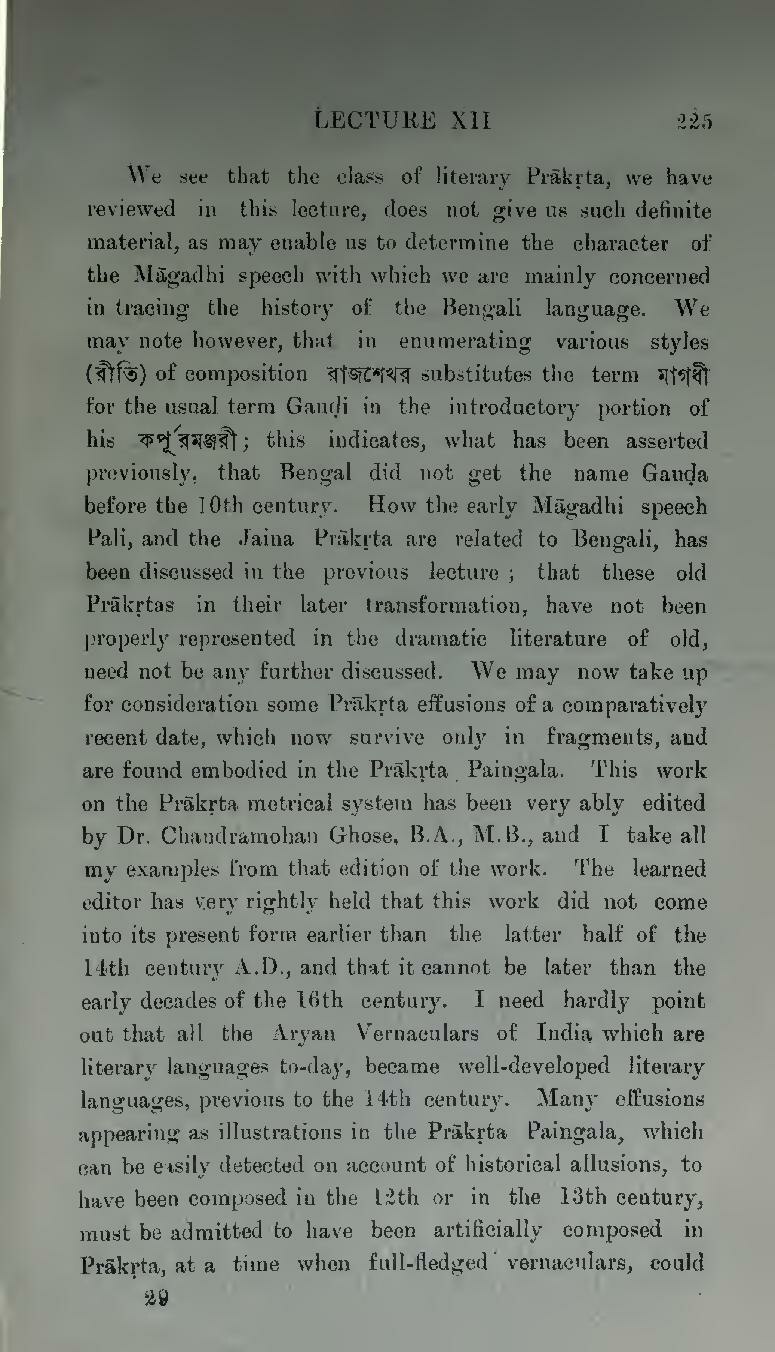We see that the class of literary Prākṛta, we have reviewed in this lecture, does not give us such definite material, as may enable us to determine the character of the Māgadhi speech with which we are mainly concerned in tracing the history of the Bengali language. We may note however, that in enumerating various styles (রীতি) of composition রাজশেখর substitutes the term মাগধী for the usual term Gauḍi in the introductory portion of his কর্পূরমঞ্জরী; this indicates, what has been asserted previously, that Bengal did not get the name Gauḍa before the 10th century. How the early Māgadhi speech, Pāli, and the Jaina Prākṛta are related to Bengali, has been discussed in the previous lecture; that these old Prākṛtas in their later transformation, have not been properly represented in the dramatic literature of old, need not be any further discussed. We may now take up for consideration some Prākṛta effusions of a comparatively recent date, which now survive only in fragments, and are found embodied in the Prākṛta Paingala. This work on the Prākṛta metrical system has been very ably edited by Dr. Chandramohan Ghose, B.A., M.B., and I take all my examples from that edition of the work. The learned editor has very rightly held that this work did not come into its present form earlier than the latter half of the 14th century A.D., and that it cannot be later than the early decades of the 16th century. I need hardly point out that all the Aryan Vernaculars of India which are literary languages to-day, became well-developed literary languages, previous to the 14th century. Many effusions appearing as illustrations in the Prākṛta Paingala, which can be easily detected on account of historical allusions, to have been composed in the 12th or in the 13th century, must be admitted to have been artificially composed in Prākṛta, at a time when full-fledged vernaculars, could
Page:The history of the Bengali language (1920).pdf/247
LECTURE XII
225
